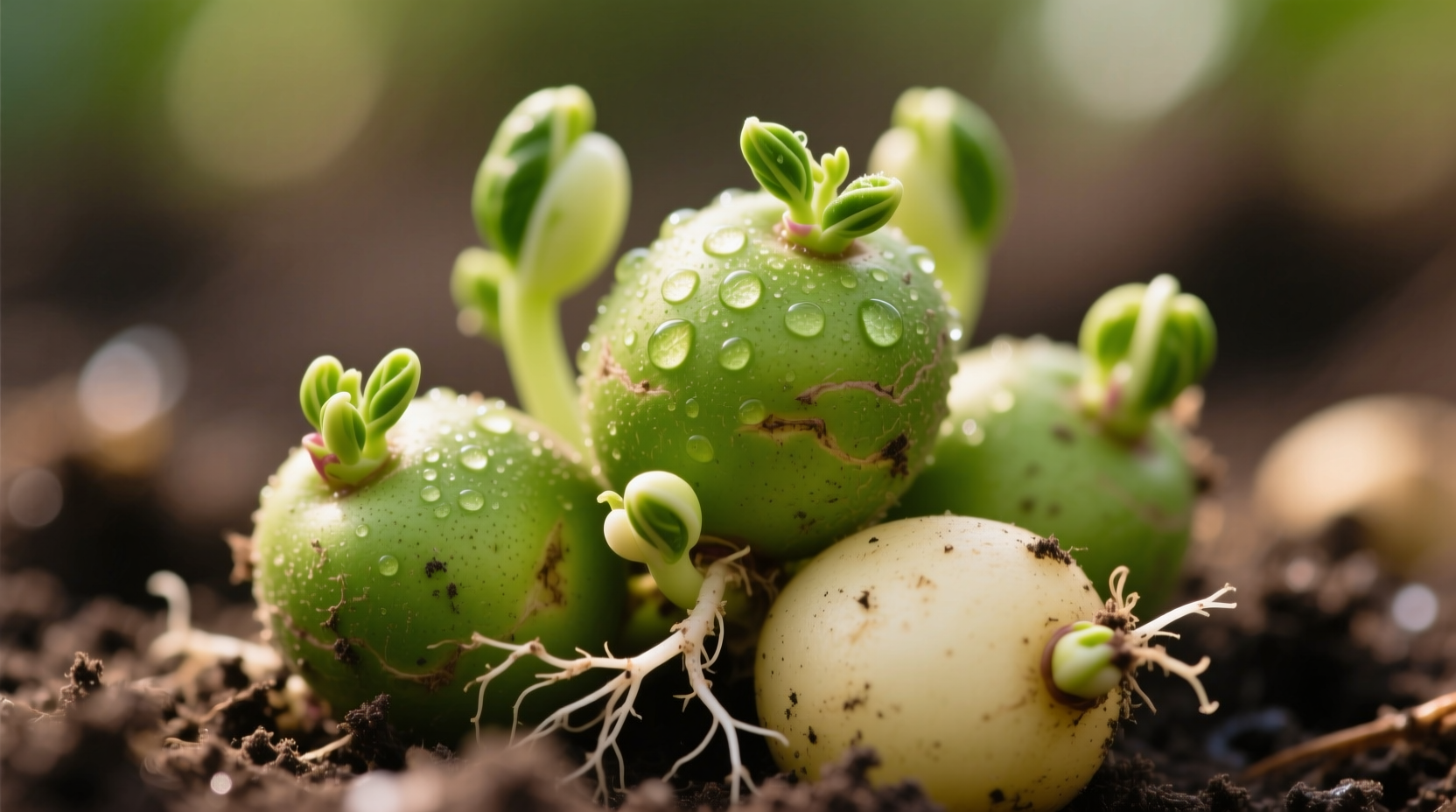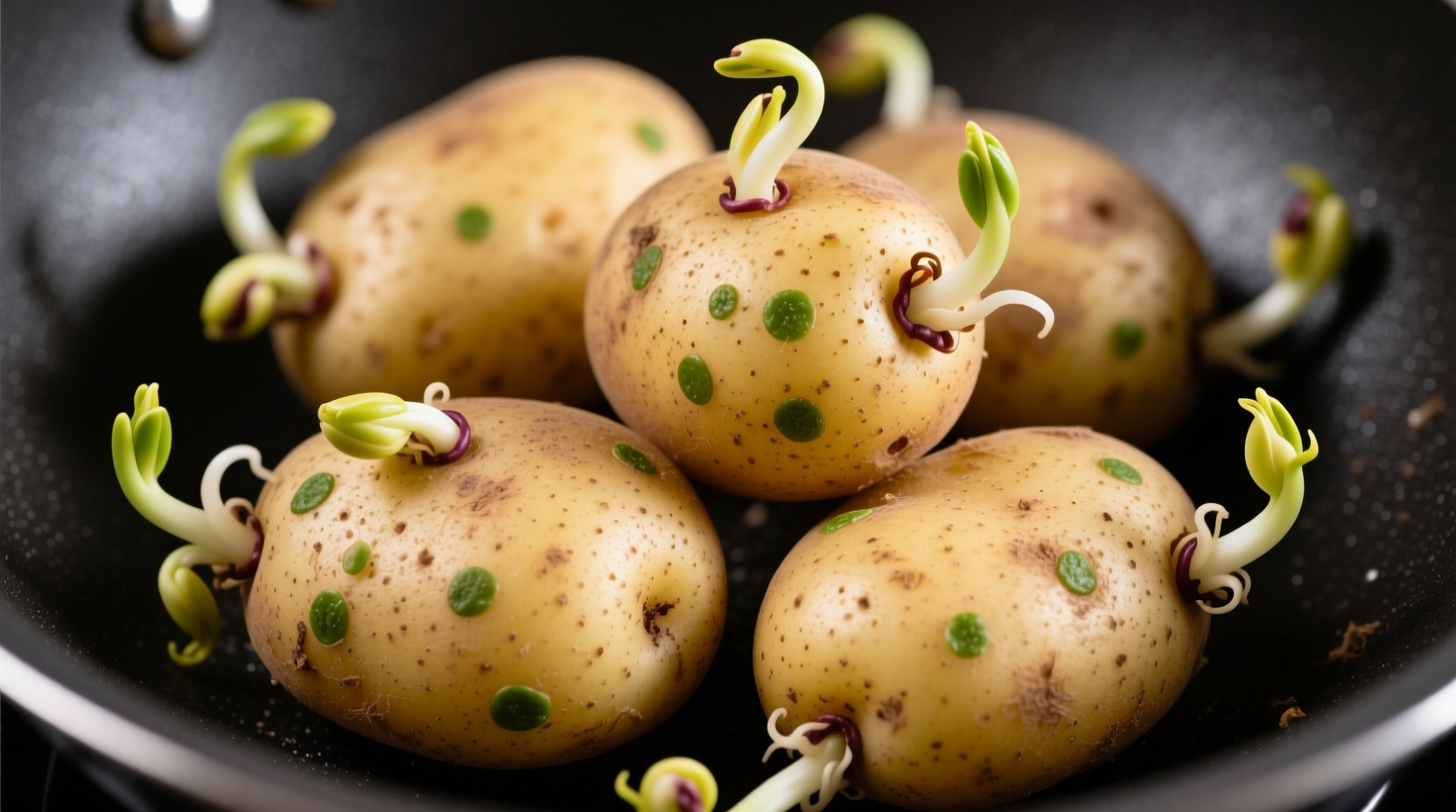No, you should not eat potato sprouts. They contain elevated levels of solanine, a natural toxin that can cause nausea, headaches, and in severe cases, more serious health issues. While small sprouts might be removable, heavily sprouted potatoes should be discarded entirely.
Discover exactly when sprouted potatoes become unsafe, how to properly handle them, and what signs indicate it's time to throw them out. This guide provides science-backed food safety information you can trust, helping you make informed decisions about one of the most common kitchen dilemmas.
Why Potato Sprouts Pose a Health Risk
Potatoes naturally produce solanine, a glycoalkaloid compound that acts as a defense mechanism against pests and sunlight exposure. When potatoes begin to sprout or turn green, solanine concentrations increase significantly—particularly in the sprouts, eyes, and green areas.
According to the U.S. Food and Drug Administration, solanine levels above 20 mg per 100 grams of potato can cause adverse health effects. While normal potatoes contain 2-13 mg per 100 grams, sprouted or green potatoes can reach dangerous concentrations of 200-1,000 mg per 100 grams.
| Potato Condition | Solanine Level (mg/100g) | Safety Assessment |
|---|---|---|
| Fresh, firm potatoes | 2-13 | Perfectly safe to eat |
| Minor sprouting (small sprouts) | 15-30 | Safe if sprouts/eyes removed |
| Significant sprouting/greening | 200-1000 | Discard immediately |
| Soft, shriveled potatoes | Varies (often high) | Discard due to spoilage |
Recognizing Dangerous Potato Conditions
Not all sprouted potatoes need immediate disposal. Understanding the progression of solanine development helps you make informed decisions:
Early Sprouting Stage
When potatoes develop small sprouts (less than 1/4 inch) but remain firm and show no green discoloration, they're generally safe after proper preparation. The Penn State University Food Science Department recommends:
- Carefully removing all sprouts and eyes with a knife
- Peeling deeply around sprout areas
- Discarding any green-tinged portions
- Using potatoes promptly after preparation
Advanced Sprouting Stage
When potatoes show multiple signs including:
- Sprouts longer than 1/2 inch
- Green discoloration on skin
- Soft or wrinkled texture
- Bitter taste when raw
These potatoes should be discarded immediately. The solanine has likely penetrated deep into the tuber, making complete removal impossible.

What Happens If You Eat Sprouted Potatoes?
Solanine poisoning symptoms typically appear 8-12 hours after consumption and may include:
- Nausea and vomiting
- Stomach cramps and diarrhea
- Headache and dizziness
- Fever in severe cases
The Centers for Disease Control and Prevention reports that while fatal cases are extremely rare with normal dietary exposure, children are particularly vulnerable due to their smaller body mass. Most cases resolve within 24 hours with proper hydration.
Proper Potato Storage to Prevent Sprouting
Understanding proper storage extends your potatoes' shelf life and prevents solanine development:
Ideal Storage Conditions
- Temperature: 45-50°F (7-10°C) - cooler than room temperature but above refrigerator levels
- Humidity: 90-95% humidity to prevent drying
- Light: Complete darkness - exposure to light triggers greening and solanine production
- Ventilation: Good air circulation in breathable containers
Common Storage Mistakes
- Storing potatoes in the refrigerator (causes sweetening and texture changes)
- Keeping potatoes near onions (onions release gases that accelerate sprouting)
- Using sealed plastic bags (traps moisture leading to rot)
- Exposing to direct sunlight or kitchen lighting
When in Doubt, Throw It Out
Food safety experts consistently recommend discarding potatoes showing multiple warning signs. The USDA Food Safety and Inspection Service emphasizes that no amount of cooking destroys solanine—boiling, baking, or frying won't make unsafe potatoes edible.
Consider these clear indicators that it's time to discard your potatoes:
- Multiple long sprouts emerging from multiple eyes
- Extensive green coloring covering more than 25% of the surface
- Soft spots or mushy texture when pressed
- Visible mold growth
- Unpleasant or bitter odor
Safe Alternatives When Potatoes Sprout
If your potatoes have begun sprouting but aren't yet unsafe, consider these creative uses before they deteriorate further:
- Make potato pancakes (the high heat helps but doesn't eliminate solanine)
- Prepare mashed potatoes (peel thoroughly and remove all sprout areas)
- Create potato soup (discard any green portions before cooking)
- Plant sprouted potatoes to grow your own crop
Remember that these options only apply to potatoes with minimal sprouting. When in doubt about potato safety, always choose the conservative option—your health isn't worth the risk of food poisoning.











 浙公网安备
33010002000092号
浙公网安备
33010002000092号 浙B2-20120091-4
浙B2-20120091-4